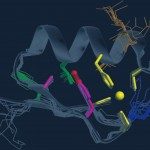Link to Pubmed [PMID] – 36882292
Link to DOI – 10.1101/pdb.top107658
Cold Spring Harb Protoc 2023 Jul; 2023(7): .pdb.top107658
Blood feeding is a critical event in the life cycle of female mosquitoes. In addition to providing nutrients to the mosquito, blood feeding facilitates the transmission of parasites and viruses to hosts, potentially having devastating health consequences. Our understanding of these short, yet important, bouts of behavior is incomplete. How and where a mosquito decides to bite and the success of feeding can influence the transmission of pathogens. A more thorough understanding of these processes may allow the development of interventions that reduce or prevent infections. Here, we present an overview of strategies for studying mosquito biting behavior and introduce the biteOscope, which provides an opportunity to observe and understand this behavior at unprecedented spatial and temporal resolution under tightly controlled conditions. The biteOscope combines recent advances in computer vision and automated tracking with designs for behavioral arenas and controllable artificial host cues that use low-cost and readily available materials.

